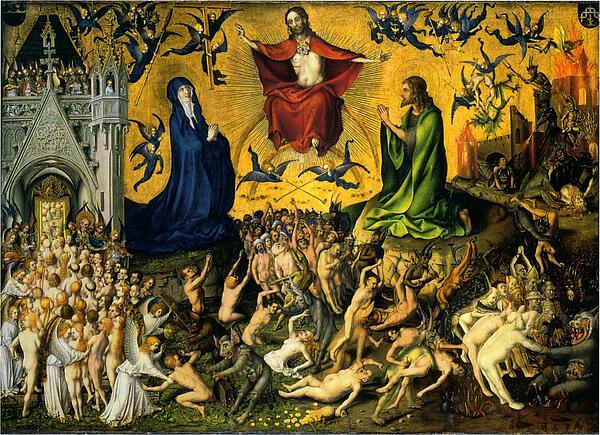Roman Catholic Church in 1500
The Roman Catholic Church in 1500 had lost much of its integrity. The involvement with the Italian War had dragged the papacy into disrepute; popes were more interested in politics than piety; and the sale of Indulgences was clearly only for the Church’s financial gain.
Despite its “rottenness”, in 1500 the Roman Catholic Church was the most powerful force in western Europe. The Catholic Church used the threat of excommunication and eternal damnation to maintain its authority.

Why was the Roman Catholic Church so Powerful?
The Papacy’s power was reliant on the indoctrination of Christians, which started from birth. By portraying the priest as a “passport to heaven” in local communities, the Church was able to maintain its supremacy. The fact that mass was in Latin meant that many people didn’t have direct access to scripture. Instead, the priests maintained their authority through a religious culture obsessed with heaven and hell.
In effect, money had become a way of ensuring entry into heaven. Wealthy families were able to buy their way into the priesthood, and thus, heaven. This meant that a peasant had to give up everything to get into heaven. Families were expected to pay for their child’s christening to ensure their entrance to heaven; pay to buy a loved one in sacred ground and pay to get married.
In addition to this, they had to pay a tithe to the Church (a tenth of their annual income), and had to work on church land a specified number of days per week.
To emphasise the importance of donating to the Church, heretics were punished with public burnings. John Huss is one such example. He was burnt in public despite being granted a safe passage to Constance in Switzerland to defend himself against accusations of heresy.
The Catholic Church could raise revenue in three other ways:
Relics: The Vatican officially sanctioned relics. They were “something left behind” from a saint. Relics took a huge variety of forms, from pieces of straw to the tears of Christ. People were told that if they paid to see- or better yet, owned - these relics, they would become holier through the object.
Indulgences: The pope issued indulgences in exchange for money or religious devotion (i.e. going on crusade). They pardoned a person’s sins and granted access to heaven. They were used as currency - by purchasing an Indulgence, financial wealth would be converted to spiritual wealth in heaven. The indulgence was initially offered as a reward for those who went on crusade; by the 16th century it could be bought to ensure salvation for oneself or for a dead family member.
Pilgrimages: The Catholic Church profited from pilgrimages, which were taken out of religious devotion. A pilgrim would make a pilgrimage to a holy site, where they would pay money for holy waters, relics and certificates to prove they had been. In effect, the Church had a created a trade in religious tourism.
When Luther spoke out against these practices, he risked the scorn of the Church and eternal damnation. The fact that he did so illustrates his anger over the Church’s exploitation of the populace.
See also: Martin Luther
MLA Citation/Reference
"Roman Catholic Church in 1500". HistoryLearning.com. 2026. Web.
